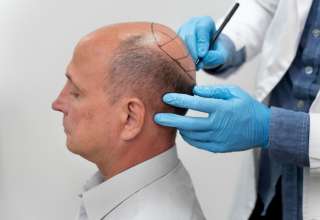Post-Traumatic Stress Disorder and Obsessive-Compulsive Disorder are severe mental health conditions that can significantly impact a person’s quality of life. Both conditions involve intense anxiety and distress, requiring effective treatment strategies.
While psychotherapy is a cornerstone of treatment, medications also play a crucial role. This article explores various medications used to treat PTSD and OCD, including traditional options and newer, innovative treatments like ketamine.
Medications for PTSD
1. Selective Serotonin Reuptake Inhibitors (SSRIs)
- Common SSRIs: Sertraline (Zoloft), Paroxetine (Paxil)
- Mechanism of Action: SSRIs increase serotonin levels in the brain, which can help to regulate mood and effectively reduce anxiety by inhibiting the reuptake of serotonin into neurons, making more serotonin available in the brain.
- Effectiveness: These medications are typically the first line of treatment for PTSD. They have been shown to reduce symptoms such as intrusive thoughts, hyperarousal, and avoidance behaviors. Sertraline and Paroxetine are FDA-approved for the treatment of PTSD and are effective in improving overall mood and reducing the severity of PTSD symptoms.
2. Serotonin-Norepinephrine Reuptake Inhibitors (SNRIs)
- Common SNRIs: Venlafaxine (Effexor)
- Mechanism of Action: SNRIs increase levels of both serotonin and norepinephrine by inhibiting their reuptake into neurons, which helps to improve mood and alleviate anxiety.
- Effectiveness: Venlafaxine has been shown to be effective in treating PTSD, particularly for patients who don’t respond to SSRIs. It helps to reduce symptoms of anxiety, intrusive thoughts, and hyperarousal, providing an alternative treatment option for people with PTSD.
3. Atypical Antipsychotics
- Common Atypicals: Quetiapine (Seroquel), Risperidone (Risperdal)
- Mechanism of Action: These medications affect various neurotransmitters in the brain by antagonizing specific receptors.
- Effectiveness: Atypical antipsychotics are often used as adjunctive treatments for PTSD, particularly for symptoms like severe anxiety, hyperarousal, and mood instability. They can help to manage comorbid conditions such as depression and bipolar disorder, making them useful in complex cases of PTSD.
4. Prazosin
- Mechanism of Action: Prazosin is an alpha-1 adrenergic antagonist that reduces noradrenergic activity by blocking alpha-1 receptors.
- Effectiveness: Prazosin is particularly effective in reducing nightmares and improving sleep quality in PTSD patients. It can help to reduce the intensity of trauma-related nightmares, leading to better overall sleep and reduced daytime symptoms.
5. Ketamine
- Mechanism of Action: Ketamine is an NMDA receptor antagonist that modulates glutamate levels in the brain, promoting synaptic plasticity and neurogenesis.
- Effectiveness: Ketamine has shown rapid antidepressant effects and can significantly reduce symptoms of PTSD, particularly in treatment-resistant cases. Administered intravenously or as a nasal spray (esketamine), ketamine can provide quick relief from severe symptoms, making it a valuable option for patients who haven’t responded to traditional treatments.
Medications for OCD
1. Selective Serotonin Reuptake Inhibitors (SSRIs)
- Common SSRIs: Fluoxetine (Prozac), Fluvoxamine (Luvox), Sertraline (Zoloft), Paroxetine (Paxil)
- Mechanism of Action: These medications increase serotonin levels by inhibiting the reuptake of serotonin into neurons, reducing obsessive thoughts and compulsive behaviors.
Effectiveness: SSRIs are the first line of treatment for OCD and are often effective in reducing symptoms when taken in higher doses. They can help to reduce both the frequency and intensity of obsessions and compulsions, improving overall functioning and quality of life.
2. Tricyclic Antidepressants (TCAs)
- Common TCA: Clomipramine (Anafranil)
- Mechanism of Action: Clomipramine increases serotonin and norepinephrine levels by inhibiting their reuptake into neurons. It has a strong affinity for serotonin receptors.
- Effectiveness: Clomipramine is highly effective for OCD and can be used when SSRIs aren’t sufficient. It can significantly reduce the severity and impact of obsessions and compulsions, providing relief for patients with moderate to severe OCD.
3. Atypical Antipsychotics
- Common Atypicals: Risperidone (Risperdal), Aripiprazole (Abilify)
Mechanism of Action: These medications affect dopamine and serotonin neurotransmission by antagonizing specific receptors.Effectiveness: Atypical antipsychotics are often used as adjunctive treatments to SSRIs for severe OCD symptoms or in treatment-resistant cases. They can help to manage co-occurring conditions such as anxiety and depression, enhancing the overall effectiveness of treatment.
4. Ketamine
- Mechanism of Action: Similar to its use in PTSD, ketamine modulates glutamate levels through NMDA receptor antagonism, promoting synaptic plasticity and neurogenesis.
- Effectiveness: Research on ketamine for OCD is still emerging, but early studies suggest that it may provide rapid symptom relief for patients with severe, treatment-resistant OCD. Ketamine can aid in reducing the intensity and frequency of obsessions and compulsions, offering a new avenue for treatment. Look for ketamine assisted psychotherapy in San Diego to get the best experience.
Combining Treatments
For both PTSD and OCD, combining medications with psychotherapy often yields the best results. Exposure and Response Prevention (ERP) and Cognitive-Behavioral Therapy (CBT) are particularly effective for OCD, while CBT and Eye Movement Desensitization and Reprocessing (EMDR) are often used for PTSD. Medications can reduce symptom severity, making it easier for patients to engage in and benefit from these therapies.
Conclusion
Effective management of PTSD and OCD often requires a combination of pharmacological and psychotherapeutic interventions. While traditional medications like SSRIs and atypical antipsychotics remain mainstays of treatment, newer options like ketamine offer hope for individuals with treatment-resistant symptoms. By tailoring treatment plans to individual needs and continually exploring emerging therapies, healthcare providers can help patients achieve better outcomes and have an improved quality of life.
If you or someone you know is struggling with PTSD or OCD, consulting a mental health professional is essential to exploring the full range of treatment options available.











